Wasabia japonica aka real wasabi! How to grow (with pics!)
Aug 3, 2017 12:54:41 GMT -5
calen, Bris, and 3 more like this
Post by meizzwang on Aug 3, 2017 12:54:41 GMT -5
CULTIVATION TIPS:
1) use 50% washed sand, 50% good quality potting soil. If you prefer to plant them in the garden, select a spot in full shade and amend the soil with good quality top soil. Be sure the soil drains well.
2) FULL SHADE is recommended. When I say full shade, this means no direct sunlight. There are exceptions to the rule: when it's between 33-50F, these can take full sun. I wouldn't risk it though: from my experience, the leaves will wilt if it gets warmer than 50F. Ideally, if the plants are placed in better light during the winter and 75% shadecloth during the summer, you can maximize growth.
3) cool nights(in the 50's and low 60's) is needed during the summer. If you can't provide this, the plants won't likely be able to tolerate 100F temps. Speaking of which, we did have temps over 100F and night temps that didn't go below 70 for a few days last grow season, the plants did fine because they were kept in full shade. Day temps. normally go above 80F during our summertime, and again, Wasabi can take this if you keep them in the cool shady locations.
4) Use good quality water low in total dissolved solids. They can tolerate higher salts (probably up to 200ppm), but this seems to make them more heat sensitive.
5) If grown potted, start them off in 6" pots and then once pot-bound, you can plant them into a 3- 5 gallon container. The more space they have to stretch their roots, the bigger your plant can get and the more wasabi you can harvest. Only pot them up in a big container once they get pretty big and have a lot of growth momentum. In the ground, space them out at least 2-3' apart, they take up a F-ton of space and the leaves can get YUUUUGE!!!
6)Fertilize 1-2x a month, 1/4 strength, but only when the temps are between approx. 45-74F. Lower or stop fertilizing if it gets hot! You can use maxsea 16-16-16. Try to stay away from high Nitrogen, as this encourages more leaves and less rhizome. I personally prefer organic, the leaves seem to taste better for whatever reason compared to using chemical ferts. More on this subject as I continue to experiment.
7) Some say adding sulfur to the soil increases the flavor. Preliminary tests on potted wasabi plants indicate that after the soil is depleted of it's organic food reserves, removing the top 1-2" of soil and adding a nutrient rich organic soil layer to the pot increases the flavor. It also keeps the pH balanced out and your leaves will stay green and healthy.
8) NEVER let the soil dry out!!!! NEVER!!! These grow on the side of streams in the shady, cool Japanese mountains that are snow-melt fed. They're always kept moist, but not water-logged. IF you see the top layer of soil dry out, the plant is likely water-stressed.
9) I haven't gotten to this point yet, but the main rhizome can be harvested after about 2 years and the side shoots can be propagated to replace the mother plant. I've only propagated the side shoots, and did this during the dead of winter when it was nice and cold. The key to success is taking side shoots only when the plant is really happy and growing fast.
10) Do not let these plants freeze, or so they say! I say experiment once you propagate extra plants and share your results. It doesn't get cold enough here to run any experiments.
11) Extreme heat(ie. 110F day temps) is OKAY so long as you have cool nights and full shade. Now, if it's 110F in full shade, that plant will probably die, but I remember my plants feeling very warm (soil temps in the 80's?) and still not being phased by it. In Japan, air temps can get very hot, but they claim the snow-fed streams that Wasabi is grown in stays between 55-60F 13-16C(?). Those soil temps are very ideal, especially if you can get that during the summer!
Wasabi growers are very secretive about how to grow good quality wasabi, and Japanese growers report water grown wasabi is better than soil grown. Fortunately, I'm just a hobbyist, so I don't mind sharing all this with you! I'm running some experiments and will report back on the results regarding soil grown wasabi, I believe you can grow equally good quality wasabi this way.
Now that you have a general understanding of how to grow Wasabi, I hope you enjoy my story behind this plant!
Back in high school (decades ago), this super intellectual star trek nerd dude with a pony tail (yeah, he looked like the comic book store owner on the Simpsons, except this guy was actually really fascinating and chill person to talk to) told me that the wasabi you get at sushi restaurants was nothing more than horse radish and food coloring. I thought, that's gotta be horse shit! Turns out, he was right.
well, decades later, I wanted to find out why they don't use real wasabi at japanese restaurants, and it turns out it's because Wasabi is deemed one of the most challenging crops to grow commercially. It takes 2 years before you can harvest the modified stem, grate it up, and serve it with some fresh sashimi. Even that, the quality reportedly depends on how it was grown: wasabi grown in cold, fresh mountain water tends to have better flavor and quality compared to soil grown.
Anyways, given that we all love to grow difficult to grow plants, Wasabi became a natural candidate to try out! I grow them under 75% shade cloth, and they're in a spot that only gets morning sun/afternoon shade (they're growing with my Disas!) The morning sun is shaded by the shade cloth, but it provides "bright" full shade when it's nice and cold during the morning. Cool conditions and bright, indirect light accelerate growth.
I purchased a TC start and some rhizomes from a company in Oregon, and it was a very rough start. First off, the rhizomes were pretty small and you pay a hefty amount to get them. Secondly, a few rotted off in the very beginning, and took a long time to adjust to my growing conditions.
Initially, when the TC start arrived, I couldn't believe my eyes: 3-4 elongated, weak, yellowed from a lack of light, small leaves and a tiny plant in a 2" pot. WTF? It seemed very disappointing, but it was a blessing in disguise. At first, I underpotted the plants and once it started growing, it was fed a very dilute fertilizer solution of 16-16-16 about 2x a month. Turns out, out of all my soil mixes, 50% washed sand and 50% potting soil is the absolute best.
In the photo below, to the left, the big old plant is Wasabia japonica 'Mazuma' which was the tiny 2" tissue culture start. To the right is Wasabia 'Daruma', acquired as a rhizome division in February 2017. Notice the TC start is so much bigger and happier than the rhizome divisions:
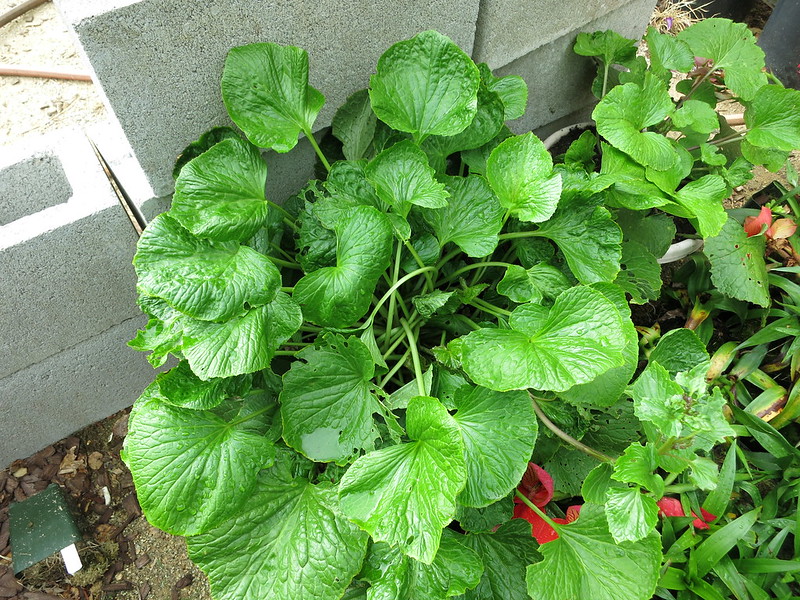
Another shot-the big mazuma clone is already sending up a flower bud! I can't believe how fast these plants grow:
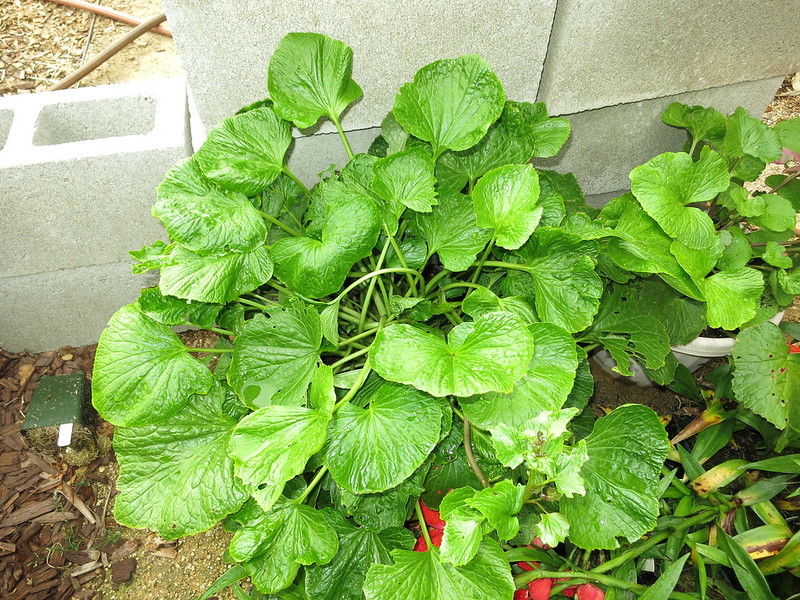
I suspect these plants won't take 2 years and perfect conditions to produce good quality wasabi. If you grow them fast, but then slow them down and stress them a bit before the harvest, I bet the flavor will improve. Will experiment to see if that's true, to be continued....
1) use 50% washed sand, 50% good quality potting soil. If you prefer to plant them in the garden, select a spot in full shade and amend the soil with good quality top soil. Be sure the soil drains well.
2) FULL SHADE is recommended. When I say full shade, this means no direct sunlight. There are exceptions to the rule: when it's between 33-50F, these can take full sun. I wouldn't risk it though: from my experience, the leaves will wilt if it gets warmer than 50F. Ideally, if the plants are placed in better light during the winter and 75% shadecloth during the summer, you can maximize growth.
3) cool nights(in the 50's and low 60's) is needed during the summer. If you can't provide this, the plants won't likely be able to tolerate 100F temps. Speaking of which, we did have temps over 100F and night temps that didn't go below 70 for a few days last grow season, the plants did fine because they were kept in full shade. Day temps. normally go above 80F during our summertime, and again, Wasabi can take this if you keep them in the cool shady locations.
4) Use good quality water low in total dissolved solids. They can tolerate higher salts (probably up to 200ppm), but this seems to make them more heat sensitive.
5) If grown potted, start them off in 6" pots and then once pot-bound, you can plant them into a 3- 5 gallon container. The more space they have to stretch their roots, the bigger your plant can get and the more wasabi you can harvest. Only pot them up in a big container once they get pretty big and have a lot of growth momentum. In the ground, space them out at least 2-3' apart, they take up a F-ton of space and the leaves can get YUUUUGE!!!
6)Fertilize 1-2x a month, 1/4 strength, but only when the temps are between approx. 45-74F. Lower or stop fertilizing if it gets hot! You can use maxsea 16-16-16. Try to stay away from high Nitrogen, as this encourages more leaves and less rhizome. I personally prefer organic, the leaves seem to taste better for whatever reason compared to using chemical ferts. More on this subject as I continue to experiment.
7) Some say adding sulfur to the soil increases the flavor. Preliminary tests on potted wasabi plants indicate that after the soil is depleted of it's organic food reserves, removing the top 1-2" of soil and adding a nutrient rich organic soil layer to the pot increases the flavor. It also keeps the pH balanced out and your leaves will stay green and healthy.
8) NEVER let the soil dry out!!!! NEVER!!! These grow on the side of streams in the shady, cool Japanese mountains that are snow-melt fed. They're always kept moist, but not water-logged. IF you see the top layer of soil dry out, the plant is likely water-stressed.
9) I haven't gotten to this point yet, but the main rhizome can be harvested after about 2 years and the side shoots can be propagated to replace the mother plant. I've only propagated the side shoots, and did this during the dead of winter when it was nice and cold. The key to success is taking side shoots only when the plant is really happy and growing fast.
10) Do not let these plants freeze, or so they say! I say experiment once you propagate extra plants and share your results. It doesn't get cold enough here to run any experiments.
11) Extreme heat(ie. 110F day temps) is OKAY so long as you have cool nights and full shade. Now, if it's 110F in full shade, that plant will probably die, but I remember my plants feeling very warm (soil temps in the 80's?) and still not being phased by it. In Japan, air temps can get very hot, but they claim the snow-fed streams that Wasabi is grown in stays between 55-60F 13-16C(?). Those soil temps are very ideal, especially if you can get that during the summer!
Wasabi growers are very secretive about how to grow good quality wasabi, and Japanese growers report water grown wasabi is better than soil grown. Fortunately, I'm just a hobbyist, so I don't mind sharing all this with you! I'm running some experiments and will report back on the results regarding soil grown wasabi, I believe you can grow equally good quality wasabi this way.
Now that you have a general understanding of how to grow Wasabi, I hope you enjoy my story behind this plant!
Back in high school (decades ago), this super intellectual star trek nerd dude with a pony tail (yeah, he looked like the comic book store owner on the Simpsons, except this guy was actually really fascinating and chill person to talk to) told me that the wasabi you get at sushi restaurants was nothing more than horse radish and food coloring. I thought, that's gotta be horse shit! Turns out, he was right.
well, decades later, I wanted to find out why they don't use real wasabi at japanese restaurants, and it turns out it's because Wasabi is deemed one of the most challenging crops to grow commercially. It takes 2 years before you can harvest the modified stem, grate it up, and serve it with some fresh sashimi. Even that, the quality reportedly depends on how it was grown: wasabi grown in cold, fresh mountain water tends to have better flavor and quality compared to soil grown.
Anyways, given that we all love to grow difficult to grow plants, Wasabi became a natural candidate to try out! I grow them under 75% shade cloth, and they're in a spot that only gets morning sun/afternoon shade (they're growing with my Disas!) The morning sun is shaded by the shade cloth, but it provides "bright" full shade when it's nice and cold during the morning. Cool conditions and bright, indirect light accelerate growth.
I purchased a TC start and some rhizomes from a company in Oregon, and it was a very rough start. First off, the rhizomes were pretty small and you pay a hefty amount to get them. Secondly, a few rotted off in the very beginning, and took a long time to adjust to my growing conditions.
Initially, when the TC start arrived, I couldn't believe my eyes: 3-4 elongated, weak, yellowed from a lack of light, small leaves and a tiny plant in a 2" pot. WTF? It seemed very disappointing, but it was a blessing in disguise. At first, I underpotted the plants and once it started growing, it was fed a very dilute fertilizer solution of 16-16-16 about 2x a month. Turns out, out of all my soil mixes, 50% washed sand and 50% potting soil is the absolute best.
In the photo below, to the left, the big old plant is Wasabia japonica 'Mazuma' which was the tiny 2" tissue culture start. To the right is Wasabia 'Daruma', acquired as a rhizome division in February 2017. Notice the TC start is so much bigger and happier than the rhizome divisions:

Another shot-the big mazuma clone is already sending up a flower bud! I can't believe how fast these plants grow:

I suspect these plants won't take 2 years and perfect conditions to produce good quality wasabi. If you grow them fast, but then slow them down and stress them a bit before the harvest, I bet the flavor will improve. Will experiment to see if that's true, to be continued....


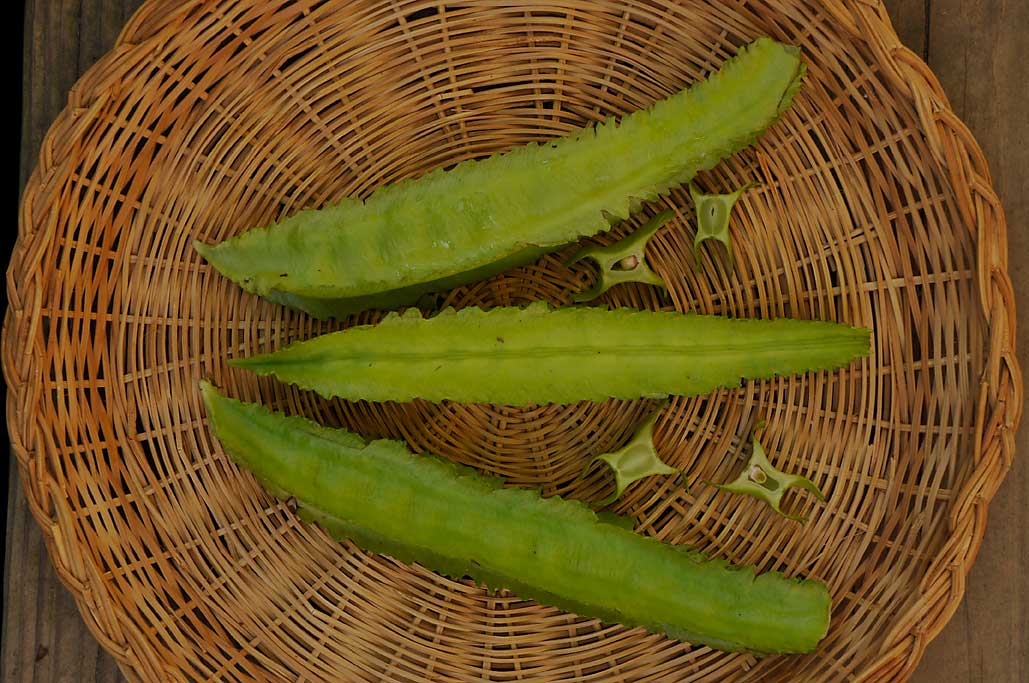
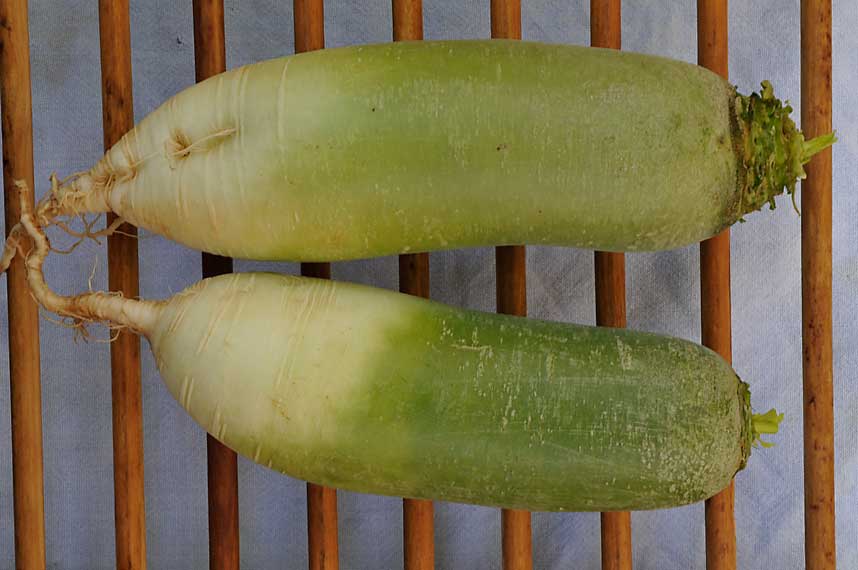
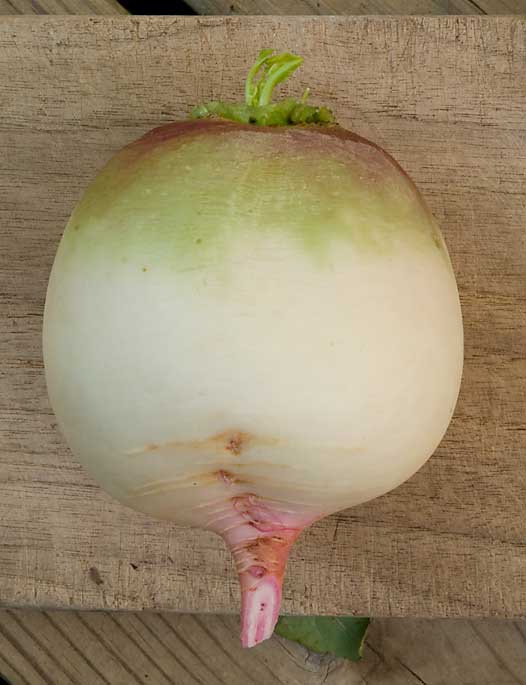
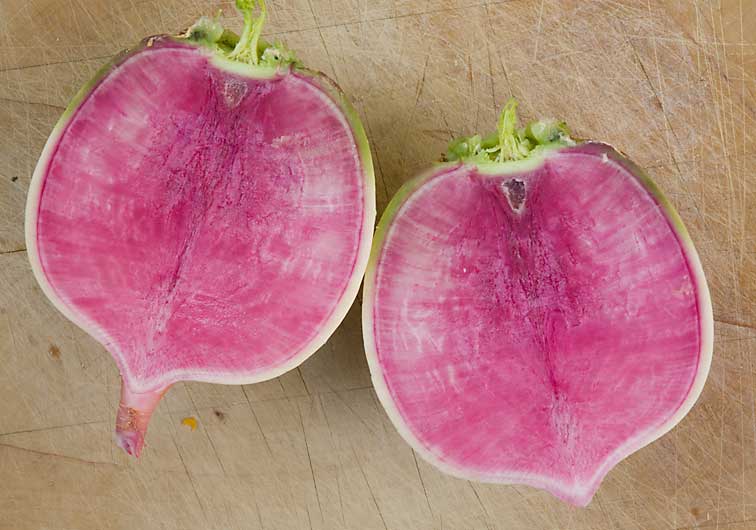
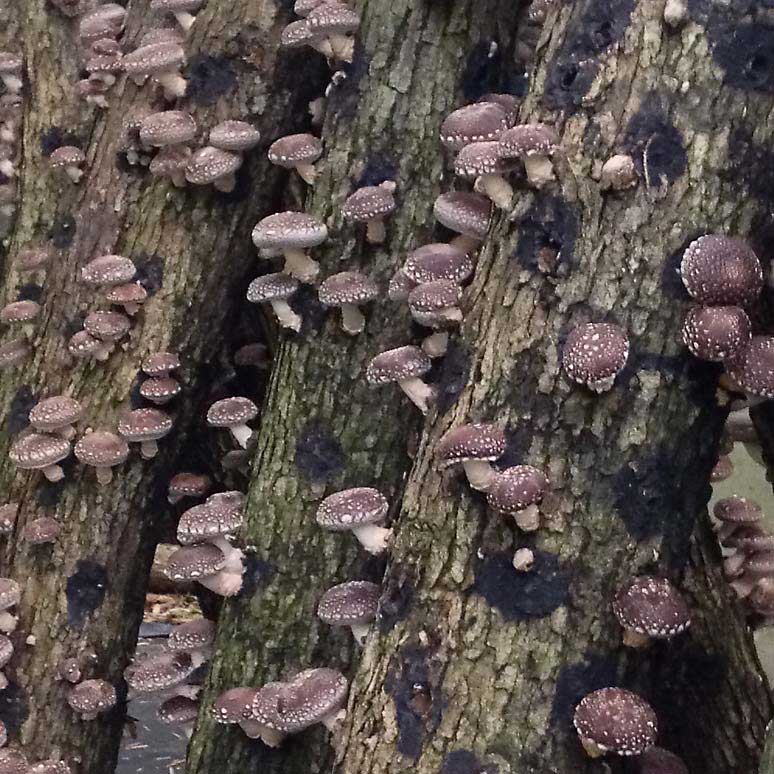
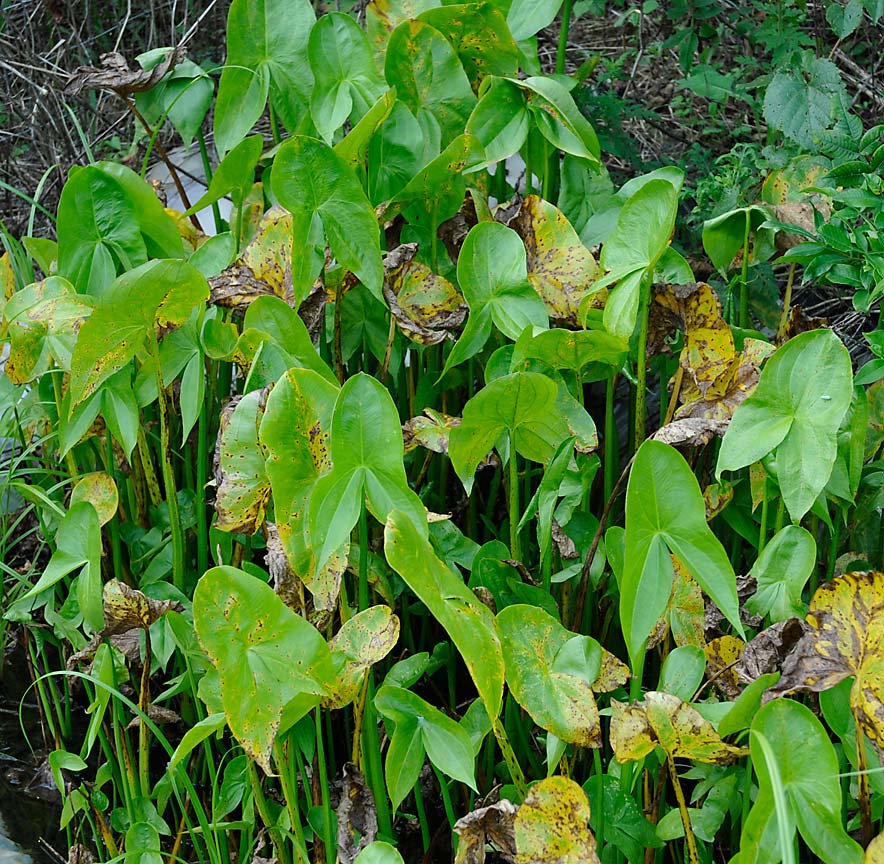
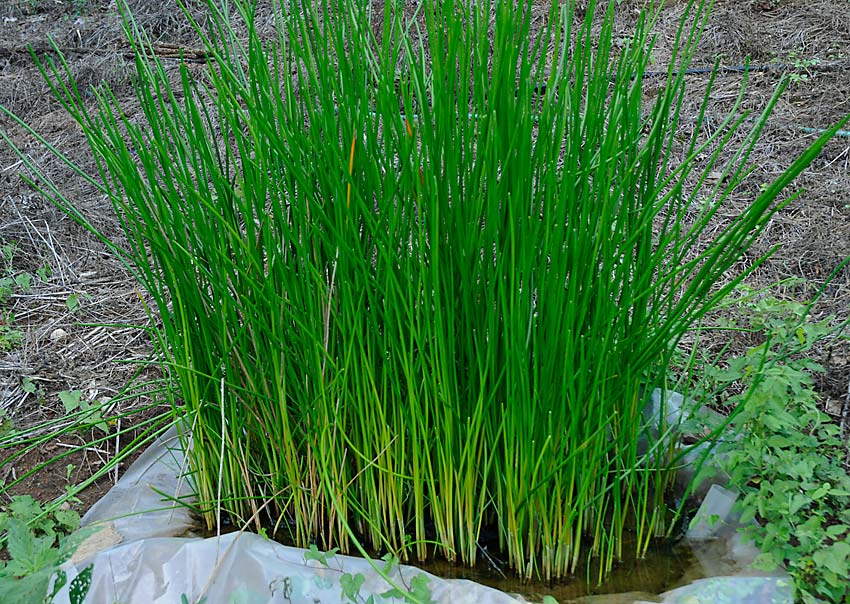
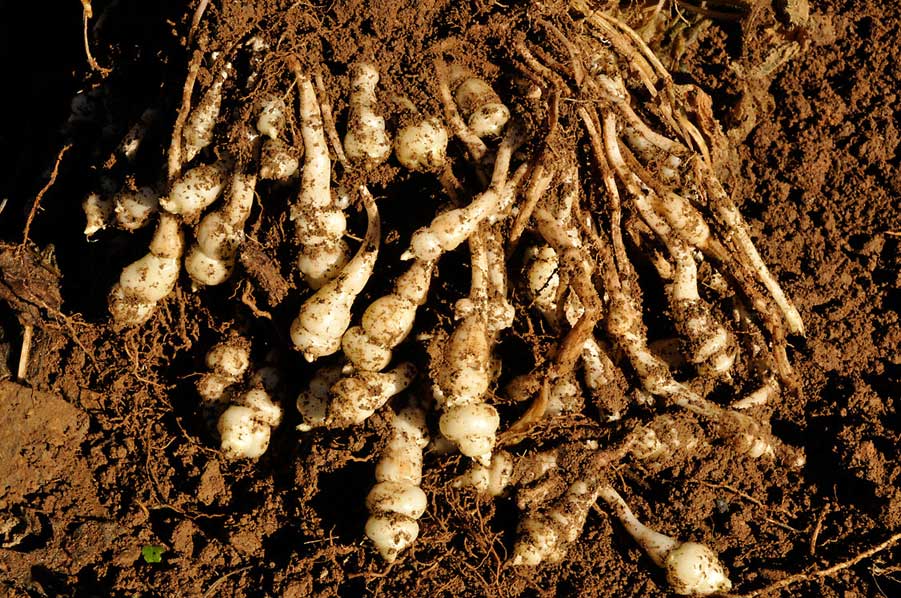
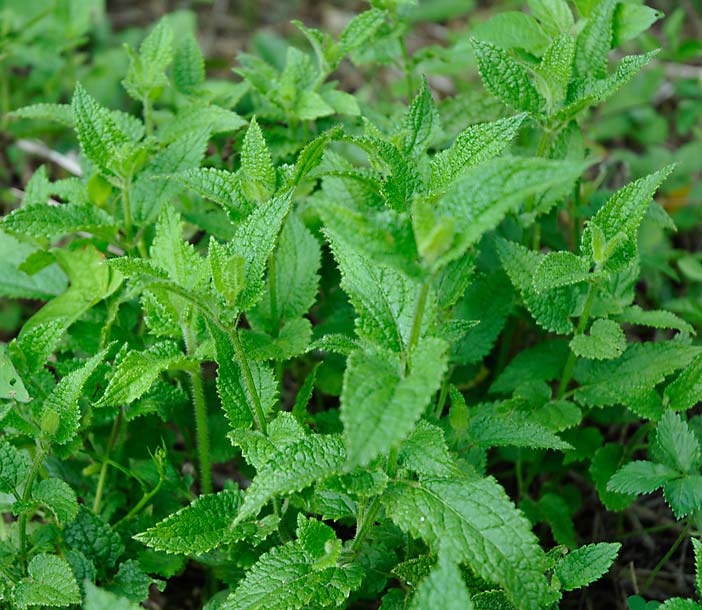
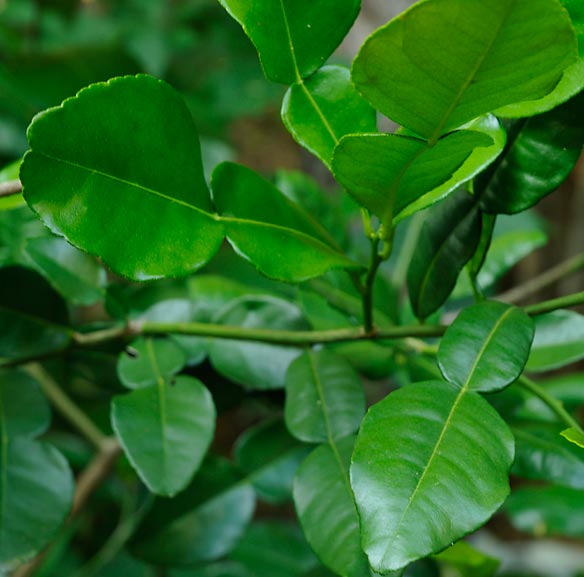
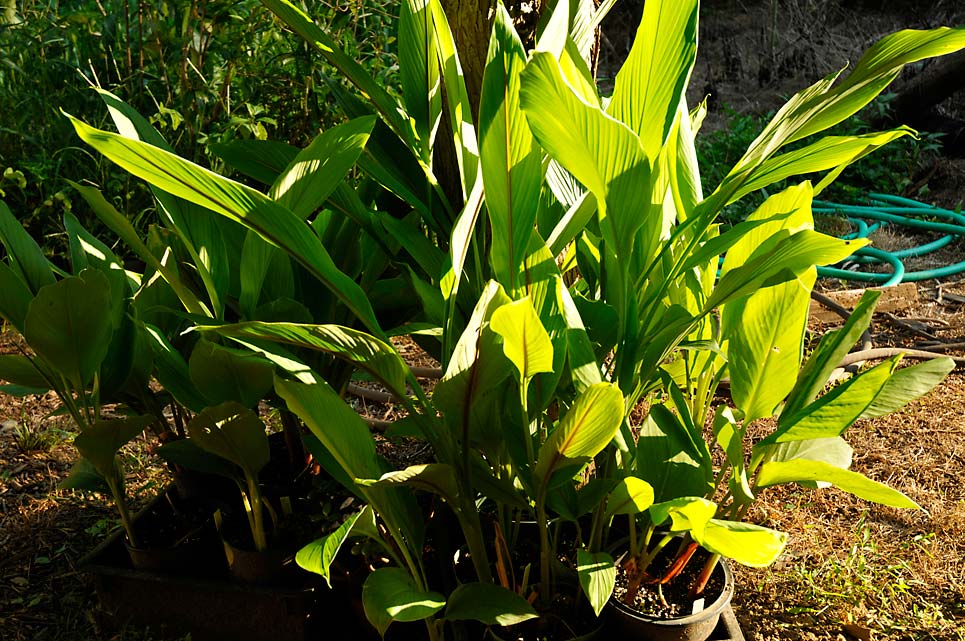

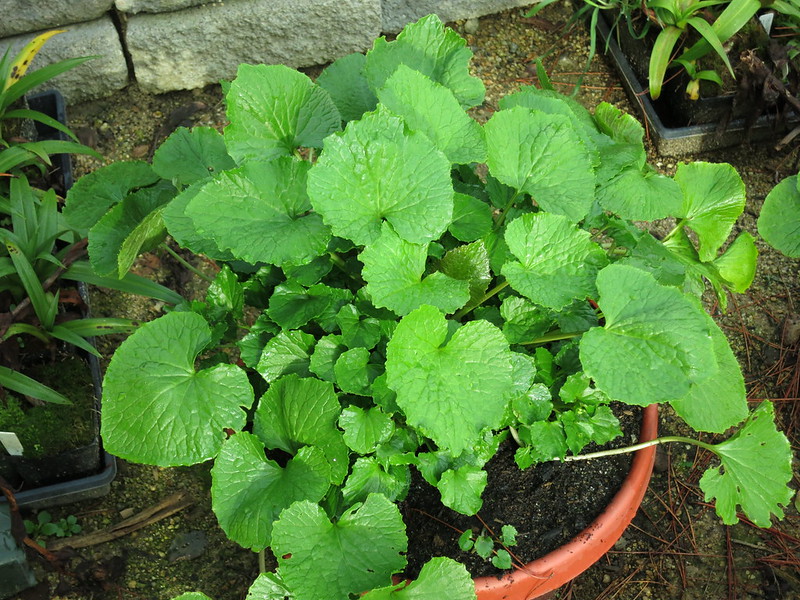
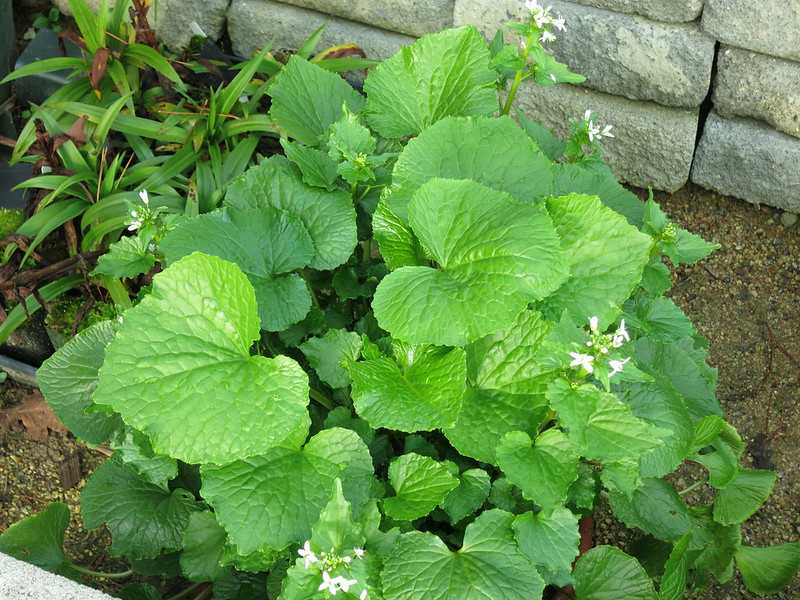
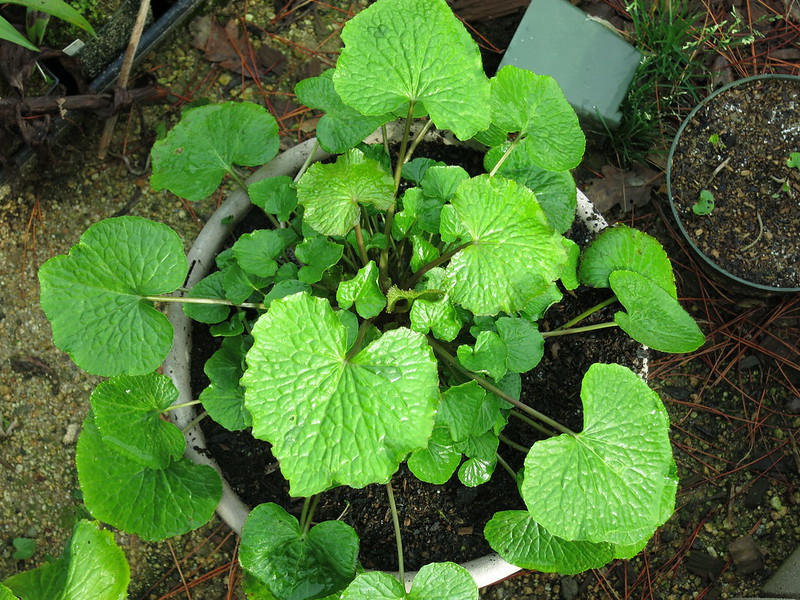

 Here are images of plant progress on 03/16/2023
Here are images of plant progress on 03/16/2023